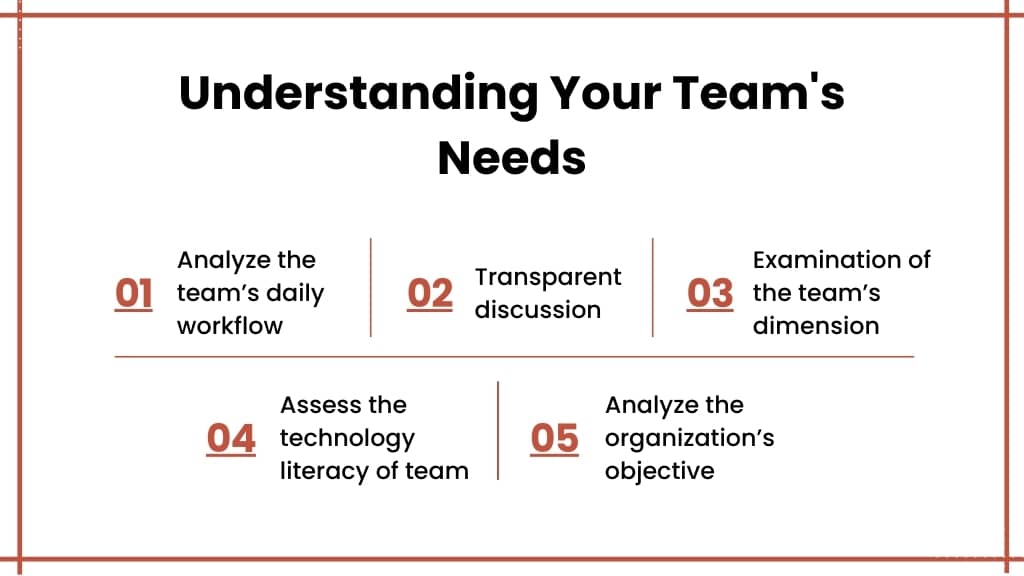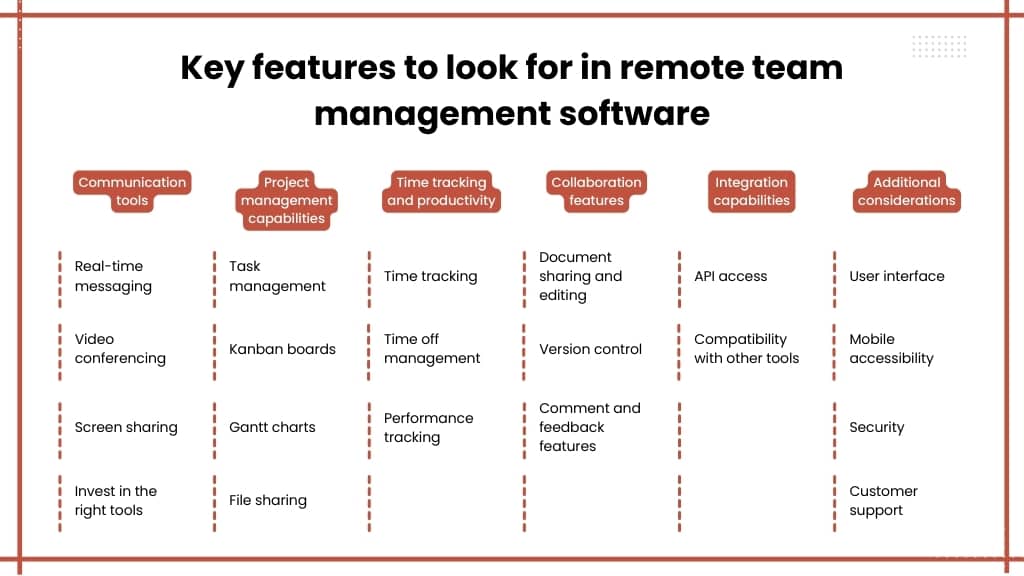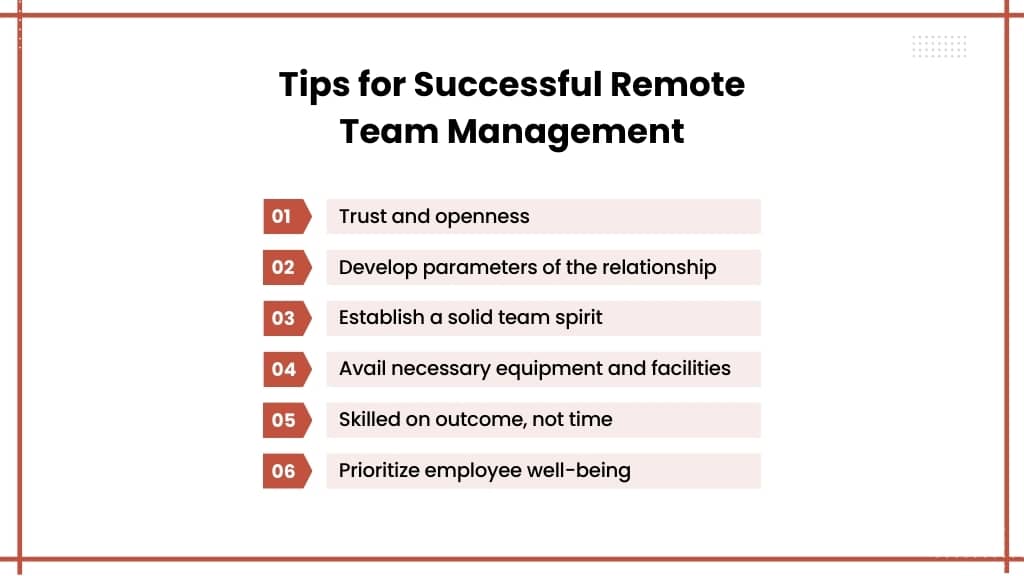Introduction
Remote team management can be quite daunting. You just can’t rely on emails and direct messages to a remotely active team member. Luckily, there are various hybrid team management software available over the web. When you have so many options, it becomes a bit challenging to decide on which is the best remote team management software for your business.
However, with the right software, tremendous differences can be observed regarding teamwork and coordination, even when the employees are geographically located in distant areas.
To ensure that you get the right software, we will help you navigate through the criteria for selecting an excellent remote team management software in this blog. We have thoroughly researched the internet and have brought you the best remote team management tools to manage a hybrid team.
Let’s explore the best tools for employees and their teams’ efficient and coordinated work.
Are you equipped to get the best out of your geographically dispersed employees?
Also read: 8 ways to improve remote team dynamics
Understanding your team’s needs
Knowing about the right remote team management software for enhanced performance is essential for a manager or team leader. Before applying this approach, having a profound insight into your team’s peculiarities is crucial.

1. Analyze the team’s daily workflow
First of all, begin with the observation of your team’s everyday activity. Identify recurring challenges. Do the employees have difficulties in areas such as communication, organization of work in the framework of a project, or time management? Identify these areas of concern to find out the software’s basic operations.
2. Transparent discussion
Find out what they like and what they do not like. What currently deployed tools do they have? According to their evaluation, what requirements are considered necessary? The choices they make will be INFORMATION – These insights will help you make the right choices when it comes to software.
3. Close examination of the team’s dimension
Think of the staff involved, their position and duties in the group, and the integration of all the members. The possibilities of choosing a tool can also be different: a small and very flexible team wants to work with a tool that has simple functionality, whereas a big team and team members that are geographically distributed need potent features.
4. Assess the technology literacy of team
Check the level of a team’s technophobia or, in other words, its comfort level with using technologies. Select software that should coincide with the users’ expertise to smoothen the process of utilizing it.
5. Analyze the organization’s objective
It should align with your company’s values and goals and not obstruct the business objectives. For instance, if the communication policy of the project emphasizes the preservation of transparency, one should choose a tool that supports the openness of communication.
In this regard, observing your team’s interactions and members’ work approach will help you choose the suitable remote team management software to foster team productivity.
Read more: Hiring the right talent: all aspects covered
Key features to look for in remote team management software
It is crucial to choose tools to manage a remote team to boost their efficiency and effectiveness. Here are key features to consider:

1. Communication tools
- Real-time messaging: To allow the participants to convey information to each other and their colleagues quickly and flexibly.
- Video conferencing: Support the organized face-to-face communication for purposes such as meetings, designing creative sessions, and even the development of team spirit.
- Screen sharing: Include features enabling workers to edit the documents and presentation materials together.
2. Project management capabilities
- Task management: A system to be used for assigning arrangements and prioritizing tasks.
- Kanban boards: Map the current and pending workflow and the project’s progress.
- Gantt charts: Assign the tasks and their dependencies and time them.
- File sharing: Use a common repository to share documents.
3. Time tracking and productivity
- Time tracking: Paying attention to the time taken when performing tasks and projects.
- Time off management: Handle employee attendance and visas and master schedule.
- Performance tracking: Assess personal/ team results.
4. Collaboration features
- Document sharing and editing: Modify documents so that more than one user can edit them simultaneously.
- Version control: Records modification progress and undo the work done.
- Comment and feedback features: Quality of a collaboration environment to support the management of projects.
5. Integration capabilities
- Compatibility with other tools: This is great for businesses because they can connect with other software that is already in use, such as Human resource management, Customer relation management, and accounting, among other software for smooth operations.
- API access: Enable additional settings so that it can be embedded with other applications and automated.
6. Additional considerations
- User interface: Select an application that has a clear layout so the students do not experience any difficulties while operating it.
- Mobile accessibility: Make sure it runs on smartphones and tablets.
- Security: To protect their databases and customers’ information, they should place importance on data protection and privacy solutions.
- Customer support: To assess the quality of support from the company or other possible sources to the consumers.
Thus, evaluating these features properly will allow the selection of a suitable remote team management tool that will fit your team and increase work performance.
Know more: 7 Absolute bad management habits at work
Popular remote team management software options
It is important to realize that managing remote teams requires different equipment and methods to be applied. Here are some popular options:
ProofHub
ProofHub is a project management and team collaboration software. It is built on the latest technology, which helps you gather your remote team on a single screen. It helps in time management, team collaboration, task delegation, and other essential tasks.
Asana
In this top list of remote team management software, this platform provides excellent tools such as assignments, due dates, and progress. The suggestion encourages responsibility and reportage of activities in the team, among other uses.
Slack
Fast becoming a remote team software, Slack provides real-time communication through messaging, sharing of files and screens, and video conferencing. It encourages people to be in touch with one another.
Trello
This is a collection of boards, lists, and cards that help with managing tasks and projects. A good fit for agile teams and moves workflow visualization to the next level. Trello is a trusted tool for all your remote work tools.
Zoom
As a top video conference application, Zoom connects people for communication, seminars, and sharing screens. It helps maintain interaction between workers in different branches or at home.
Monday.com
This all-in-one solution features project management, task management, and communication functions. This facility provides each team with the potential to adjust its features following its requirements.
How to Choose the Right Software
Therefore, choosing the best software for a remote team is looking at the requirements of the team and their preference. Here’s a guide to help you make an informed decision:
1. Identify your team’s needs
- Communication style: Which is suitable for you, communication that is timed or one that is on your own time?
- Project management methodology: Which type of project management methodology do you use, Agile, Waterfall, or any other type of methodology?
- Team size: Approximately how many individuals are on your staff?
- Budget: As an answer to the second question, i. e. ‘What is your software budget?’
- Integration: Is the software compatible with another program that you and your team employ?
2. Trial and evaluation
- Free trials: When testing most software, it is free for trial purposes to see which features will work well and are mainly used.
- Demo: Click on the demos to inquire and for you to have a glimpse of how the particular software will work.
- User feedback: Collect feedback from your team so that you are sure the software in question will fulfill their needs.
3. Popular options and comparisons
- Create a shortlist: According to your requirements, you will be able to carry out research on various software and compare one with the other.
- Consider alternatives: Go through the conventional and innovative technologies.
- Read reviews: As for the user’s views, one should check the site’s ratings and read customers’ reviews online.
Enhance your knowledge: 9 Challenges of hybrid working and how you should tackle them
Tips for Successful Remote Team Management
Let’s discuss a few tips that will help you manage your remote team effectively. By applying these tips, you will be not just enhancing the remote working environment but working collaboratively to achieve goals.

1. Trust and openness
Team communication is the building block of any team and is more significant to remote teams because most interaction occurs through electronic devices. People working in managerial positions must encourage free and effective communication.
Daily/weekly informal conversations – between two and large group meetings – are critical to maintaining awareness of others. Building trust is vital. Promote communication and listening skills and ensure all individuals within a group are free to express themselves.
2. Develop parameters of the relationship
This means that distant staff generally need more prescribed directions. This ensures that there is an objective understanding of the prescribed obligations so as to reduce conflict prevalence that stems from ambiguous work descriptions.
Create a project management chart to detail objectives, timelines, and factors of completion. These calls encourage all members to make sure that they are on the right track regarding the goals of the team.
3. Establish a solid team spirit
Nevertheless, while the employees are geographically separated, the team’s values must be actively built. It is suggested that virtual team-building activities be scheduled to help team members create a strong basis of trust and cooperation.
Engage in social contacts mainly using working groups’ communication platforms. Reinforce the efforts made to ensure organizational success through motivation and appreciation as a way of enhancing productivity.
4. Avail necessary equipment and facilities
Ensure that your team is well-endowed with the proper tools to enhance workplace productivity. Efficient communication tools, project management applications, and reachable assets all contribute to efficient working.
However, it provides an opportunity to be trained and familiarize yourself with the tools to enable efficient usage. It is necessary to evaluate the team’s necessities and supply the appropriate equipment to improve efficiency.
5. Skilled on outcome, not time
Since it will rarely be possible to manage the time employees spend in a remote work environment, pay attention to the results achieved, not the hours worked. Ensure that the performance’s goal and expectations are well determined and communicated.
The primary message that should be taken from this information from your employees is that you can trust them to be punctual as they are efficient when it comes to work schedules. Focus on monitoring and giving feedback as well as supporting the members of the team so that they can accomplish the set objectives.
Prioritize employee well-being
It is about remote work with the help of which people can become the victims of loneliness and isolation. Cultivate people by providing psychological assistance, ensuring that employees have adequate time and are not overwhelmed with work. It would also be beneficial to schedule periodic meetings to address any problems and offer the needed assistance.
Explore further: 8 Habits to keep your remote team engaged in 2024
Bottom line
Therefore, to sum up, deciding upon the right tools to manage the remote team involves analyzing the offered options and the necessity of the team. When being aware of the functions such as communication, project management, and security, you can choose the tool that promotes productivity and teamwork.
Do not forget about employees’ health, and make sure that you have a proper working team atmosphere to make work-from-home models effective. It simply means that dispersed employees can also deliver extraordinary performances in the event that they work under competent leadership and the right equipment.



























No Comments